There are many fruits that start with B. In this guide, I’ll especially show you their diverse tastes and nutritional profiles to help you make the most of your fruit consumption.
These fruits range from the widely-known banana to the exotic Buddha’s hand fruit and more. Besides, you can quickly learn popular B-titled veggies.
By the end of this post, you’ll be well-versed in the taste sensations, health perks, and versatile culinary uses of these B-named foods.
So, why hesitate? Unleash your inner fruit explorer and start a mouthwatering adventure today!
49 Fruits That Start with B with Filters
Check out these B fruits using the handy filter. Now you can discover the exotic and native ones, those that are also used as veggies, and the best picks for cooking, beverages, or garnishing.
Banana
- For Beverages
- For Dishes
You might be too familiar with the humble banana, a staple fruit known for its elongated, curved shape and vibrant yellow peel when ripe. Peeling away the skin reveals a soft, creamy, and sweet flesh.
Among hundreds of banana types, the Cavendish variety is the most prevalent, with distinctions in size, hue, and flavor. Other lesser-known varieties encompass red bananas, baby bananas, and plantains
The best way to enjoy the flavor of this fruit is to eat them fresh. They also add to diverse recipes, from smoothies and pancakes to banana bread and ice cream.
Bananas are known for their numerous health benefits. They are rich in potassium, vitamin C, and B6, which contribute to maintaining a healthy heart and immune system.
Bell Pepper
- For Dishes
- Fruit Vegetables
Bell pepper, aka sweet pepper or capsicum, is a versatile fruit vegetable. They come in many shapes and sizes, typically green, red, yellow, or orange. Generally, green means less ripe, and red indicates fully ripe.
Bell peppers have a firm and crisp texture, providing a pleasing crunch when bitten. The flavors of the flesh differ among varieties; red peppers are sweeter and not bitter, while green peppers have a grassy and mildly bitter taste.
Though their flavors differ subtly, all bell peppers have a shared sweetness, making them popular in various recipes, particularly savory dishes. Whether raw, grilled, roasted, or sautéed, they’re a key ingredient in various dishes such as salads, stir-fries, and stuffed peppers.
Blackberry
- For Beverages
- For Dishes
As you savor a juicy blackberry, you’ll notice its deep purple-black hue, often accompanied by a delightful taste.
This delicious fruit, varying in size from about 0.5 to 1.5 inches, has a unique shape consisting of multiple small, plump drupelets.
When you bite into a blackberry, you’ll be greeted with a tender yet slightly firm texture bursting with a delightful blend of sweetness and tang.
They can be enjoyed fresh, or tossed into smoothies, pies, or baked foods, for a revitalizing drink or sprinkle them in salads.
Blueberry
- For Beverages
- For Dishes
Blueberries are small, round berries with a vibrant blue color and smooth skin, typically measuring about a half-inch in diameter.
With their ideal mix of firmness and juiciness, blueberries are a joy to eat. Their flavor is a harmonious blend of sweet and mildly tart, enhanced by a gentle, fruity aroma.
Incorporate these gems into daily meals with smoothies, pies, salads, and more. Blueberries thrive in summer, so expect the freshest and tastiest berries then. These small fruits are particularly popular in North America, specifically the United States and Canada.
Blueberries come with high levels of antioxidants, vitamins, and minerals. They’re particularly rich in vitamins C and K, which support immune function and bone health.
Boysenberry
- For Beverages
- For Dishes
Boysenberries, with their deep maroon color and plump, slightly elongated shape, are truly a sight to behold. They have a similar color to blackberry and loganberry shape.
Boysenberries offer a smooth, tender texture that’s juicy and enjoyable with every bite. Their flavor is a sweet and tangy mix, similar to blackberries but with a sweeter, raspberry-like floral note.
Therefore, they are perfect for various uses, such as in fruit salads, pies, or even blended into refreshing smoothies.
Today, they’re cultivated in several regions, but the most commercially grown boysenberries come from Oregon.
Breadfruit
- For Dishes
Breadfruit is a special tropical fruit with a large, round shape, often measuring 6-12 inches in length and 4-8 inches in diameter.
The outer skin is green and bumpy, with a pattern that resembles a network of irregular polygons. Inside, you’ll find starchy, creamy-white flesh. Moreover, this one is also related to jackfruit, sharing a similar external and internal look.
When cooked, breadfruit transforms into a smooth, slightly sweet, and somewhat sticky consistency reminiscent of freshly baked bread. Its aroma is subtle yet inviting.
Breadfruit is versatile in many recipes, from traditional Caribbean dishes to modern fusion cuisine. It can be roasted, boiled, fried, or even turned into flour to create dough for bread and pastries.
Bilberry
- For Beverages
- For Dishes
Bilberries are small, dark berries with a deep purple color and a round shape, similar in size to their close relative, the blueberry. The bilberry has smooth, thin skin that encases a juicy, soft interior.
However, bilberries don’t share the same flavor as blueberries. Some people find it too acidic to eat, but its taste is much stronger than blueberries. That’s why it’d be better to use them to make pies rather than eat them raw.
Bilberries truly deliver a powerhouse of health benefits, brimming with antioxidants, vitamins, and minerals. They are particularly abundant in vitamin C.
FYI, these small yet mighty fruits are indigenous to regions spanning Northern Europe and Northern Asia, flourishing in the wild, particularly in cooler climates.
Black Raspberry
- For Beverages
- For Dishes
Native to North America, black raspberries have been cultivated for centuries. Now, they’re grown in various countries worldwide, allowing more people to appreciate their flavor and health benefits.
Black raspberries are a feast for the eyes, thanks to their petite, round shape and rich blue-black color. Usually measuring 0.5 to 1 inch across, these berries offer a firm texture and an intriguing hollow center.
When you bite into a black raspberry, you’ll experience a delightful mix of sweetness and subtle tartness, with a touch of earthy undertones. These berries boast a more robust flavor compared to their red cousins.
They make delicious additions to pies, salads, and invigorating smoothies. People often use them to create purees or jams, too. Besides being tasty and nutritious, black raspberries and their leaves are used for medicinal purposes.
Bitter Melon
- For Dishes
- Fruit Vegetables
Bitter melon, or bitter gourd, is a special fruit that loves tropical and subtropical spots. Imagine a cucumber with a lumpy outside and a long shape, with colors from green to light yellow.
One bite, and you’ll quickly grasp why it’s dubbed “bitter.” With its potent, tangy taste, it’s not for everyone.
In the cooking concept, this fruit is treated as a veggie. There’s no shortage of ways to use it, from stir-fries and soups to delightful drinks. You can stuff, pickle, or add it to a curry.
As for its natural habitat, bitter melon flourishes in the diverse landscapes of Asia, Africa, and the Caribbean, where it thrives in the warmth. Regarding its health benefits, traditionally, it’s been used to balance blood sugar levels, making it a hit among those with diabetes.
Blackcurrant
- For Beverages
Blackcurrants are small, dark purple fruits with a glossy appearance. These berries have a smooth, soft texture that reveals a pleasantly juicy interior.
The taste of blackcurrants is a mix of grape and passion fruit flavors. Overall, they are tart berries with a strong hint of earthiness. Their aroma and flavors make them ideal for jams, sauces, syrups, and beverages like cordials or wine.
The blackcurrant plant’s worth extends beyond its fruit, as its seeds, skin, and leaves can be employed for various uses, such as crafting herbal teas.
Though originally native to Northern Europe and Northern Asia, black currants are not widely grown in the USA nowadays. The research shows that only 0.1% of Americans have tried this fruit before.
Bing Cherry
- For Beverages
- For Dishes
Bing cherries, first cultivated in Oregon, are beloved by fruit fans for their rich red color and plump, round shape. Their glossy exterior reveals a firm, meaty, and sweet flesh full of flavor.
The nutritional benefits of Bing cherries are worth noting, as they contain many vitamins, minerals, and antioxidants. Its deep red hue indicates the presence of anthocyanins, which possess powerful antioxidant properties.
They also share many characteristics with other cherry types, such as Rainier and Lambert. These cherries can be enjoyed fresh or used in various dishes, like pies and jams.
Black Cherry
- For Beverages
- For Dishes
Black cherries (aka rum cherry) are luscious fruits with a deep, dark color and a sweet, rich flavor. Typically round or slightly heart-shaped, they vary in size but always make an enticing addition to a fruit bowl.
Their smooth, glossy skin hides a delectable, juicy flesh. The texture of black cherries is a pleasing balance between firm and soft. And compared to other cherries, this one is sweeter than yellow or red ones.
Their versatility means they can be enjoyed in many ways, from being eaten fresh off the tree to starring in pies, jams, and smoothies.
Babaco
- Exotic
- For Beverages
Babaco fruit is an exotic fruit native to the highlands of Ecuador. This fruit is characterized by its elongated, pentagonal shape, measuring up to 12 inches long.
If you have seen papaya, babaco’s appearance resembles this fruit. That’s why the moniker of babaco is mountain papaya. Its thin and smooth skin displays a vibrant yellow hue when ripe. Inside, you’ll find seedless, succulent flesh that’s both tender and refreshing.
The taste of babaco is a unique blend of sweet and tangy, with hints of pineapple, papaya, and kiwi. You can enjoy it fresh, add it to salads or fruit cocktails, or blend it into smoothies and juices. Babaco is also a great meat tenderizer and marinade, similar to papaya.
Bacuri
- Exotic
- For Dishes
Have you ever heard about the bacuri fruit, a tropical gem native to the Brazilian Amazon and Northeast Regions?
Bacuri fruit is round or oval, about the size of an orange, and boasts a thick, leathery skin that turns from green to brownish-yellow when ripe. Its rind looks similar to papaya’s rind. And when pressed, the rind will release yellow latex.
Beneath the skin, there is a soft, creamy pulp that surrounds several seeds. The bacuri fruit is a mix of sweet and sour. That’s why locals, particularly Brazilians, typically consume them fresh by scooping out the pulp.
For other uses, this versatile component is perfect for crafting jams, jellies, liqueurs, and ice cream. It’s also a favored ingredient in traditional Amazonian cuisine, like fish stew and sauces.
Bael
- Exotic
- For Beverages
Originally native to India and Southeast Asia, bael (aka wood apple) stands out with its unusual appearance. Its hard, smooth, and woody shell is pale green to yellow in color. And they do not split open when ripened.
You will need a knife or shears to cut the fruit in half. Its flesh texture is soft with aromatic pulp interspersed with seeds (around 10 to 15 seeds).
Bael has a light sweetness with a woody and bitter note. Of course, the most convenient way is to consume them fresh. Plus, dried bael fruit is an excellent addition to herbal tea due to its aroma. In Thailand, bael fruit tea served with ice is popular.
Barbados Cherry
- For Beverages
- For Dishes
Originating from the Caribbean, barbados cherry is often recognized for its striking red hue or deep crimson and round shape. With a diameter of nearly one inch, its glossy exterior can be quite inviting.
These cherries have a soft and smooth flesh. Its juicy, sweet, and slightly tart flavor might surprise you. The fruit also contains 2 to 4 seeds inside, so remember to discard them. These seeds are not as hard as common cherries.
You can enjoy them raw and fresh or add them to your refreshing smoothies, delicious pies, or refreshing salads.
Bramble
- For Beverages
- For Dishes
- For Garnish
Bramble is a group of thorny plants belonging to the Rubus family, including black and raspberries.
They typically produce small, round, and juicy drupelets forming a larger aggregate fruit. The colors vary from deep red to dark purple, depending on the type of bramble and its ripeness.
The texture of brambles is a combination of soft, juicy drupelets and a slightly rough exterior. Each bramble variety has its flavor profile, ranging from sweet to tart, often emitting a pleasant, fruity aroma.
Bramble fruits are rich in antioxidants, vitamins, and minerals, contributing to overall wellness.
Baobab
- Exotic
- For Beverages
Native to Africa, the baobab tree has long been an essential part of local communities, not only for its fruit but also for its bark and leaves, which can be used for various purposes.
With a round to oval shape and a hard, velvety shell, its appearance alone sets it apart from others. When you crack open the baobab fruit, you’ll find a dried, powdery pulp surrounded by seeds.
Baobab’s taste is pleasantly tangy, with hints of sweetness and sourness. Many assume it has a taste of yogurt or lemon. Its flavor profile and slightly dry texture make it versatile in smoothies, energy bars, baked goods, or even brews since it is a fermenting element.
Rich in antioxidants, vitamins, and minerals, this amazing superfruit is notably rich in vitamin C, fiber, and crucial minerals. The leaves provide additional nutritional perks, including pro-vitamin A and calcium.
Barberry
- For Dishes
- For Garnish
Barberry is a fascinating fruit that adds a pop of color and tanginess to your dishes. These small, elongated berries come in a vibrant red hue and are typically no larger than a grain of rice. The fruit’s exterior is smooth, and biting into it reveals a firm texture.
The taste of barberry is tangy with a touch of sweetness. They excite various recipes, including rice, stuffing, granola, salads, and braises. They also serve as a delightful garnish for baked treats like muffins, tarts, and pastries, while their extract is perfect for making jellies and jams.
Several barberry varieties exist, with the European barberry being the most renowned. These fruits are commonly found in Europe, Central Asia, North Africa, and North America.
Blue Tongue Fruit
- Exotic
- For Beverages
Blue tongue fruit is an exotic fruit with a weird appearance. They are small and pretty bumpy fruits that open up to reveal a purplish-black pulp.
When you eat this fruit, your tongue and mouth will turn blue, hence its name. Diving into the flavor profile, the blue tongue fruit is a delightful surprise with its sweet flavor.
Therefore, they are ideal for eating fresh, so you can pick and eat them directly after removing them from the shrub. Due to its color, blue tongue fruit is fun for kids.
Its origins can be traced back to various regions, but you can find them growing wild in Australia.
Brazilian Nut
- Exotic
Originating from South America, Brazil nuts grow wild in the vast Amazon rainforest, with Brazil, Bolivia, and Peru as the primary producers. These nuts feature a large, hard, triangular shell covering the edible, crescent-shaped seeds.
Their light brown color, firm texture, and rich, earthy taste with a hint of coconut make them a sought-after snack.
Enjoy these nutritious nuts (raw or roasted) or in various dishes, from salads and granolas to baked goods and desserts like cakes and brownies. Their natural oil can be extracted for culinary or skincare applications.
Bursting with nutritional benefits, Brazil nuts are an outstanding source of vitamins, minerals, and antioxidants.
Button Mangosteen
- Exotic
- For Beverages
Button mangosteens are primarily grown in Southeast Asia. They are native to Thailand and Malaysia.
It has a vibrant orange color, round shape, and petite size. The fruit’s outer skin is smooth, while the flesh is also orange with 2 (or more) big seeds. Its taste is a blend of sweet and sour flavors, which taste similar to tangerine.
And accompanied by a pleasant, aromatic fragrance, this fruit is even more enticing to consume. Therefore, button mangosteen’s flavor completely differs from purple mangosteen’s.
Brush Cherry
- For Beverages
Originating from Australia and New Zealand, brush cherry is a small yet vibrant fruit that catches your eye with its striking appearance.
Its glossy, dark red or purple color contrasts beautifully with its round, elongated shape, and cherry-like size. When you pick one up, you’ll notice the smooth, firm texture that softens as the fruit ripens.
Grab a bite, then you’ll feel its gently sweet and a bit sour taste, along with a crispiness that reminds you of apples.
Bignay
- For Beverages
Bignay fruit is a colorful gem native to Southeast Asia and northern Australia. It is also known as Queensland cherry.
This small, round, and shiny fruit grows in clusters, resembling vibrant red or dark purple pearls. Their smooth, thin skin and sweet-tart taste make them super refreshing and energizing.
Though the bignay fruit is mostly enjoyed fresh, it’s also used in various recipes. Unripe fruits are tangy, so they can be used as a substitute for vinegar in some cases. Fully ripened ones are ideal for adding to your drink or can be used to prepare syrup or brandy.
The fruit’s nutrients also contribute to its anti-aging properties.
Bilimbi
- Exotic
- For Dishes
Another exotic and fascinating fruit is the bilimbi fruit, a tropical wonder originating from Southeast Asia, particularly Malaysia and Indonesia. Bilimbi thrives in warm, tropical climates and plays a certain role in the culinary and cultural traditions of the region.
With its elongated, cylindrical shape, this fruit resembles a small cucumber. It has smooth, thin skin that ranges from bright green to yellowish-green, and a crisp, juicy interior.
The bilimbi fruit’s taste is boldly sour. They also have a mild refreshing aroma. People normally use bilimbi fruit to make pickles and chutneys or incorporate them into dishes like rice, beans, or curries.
Brazilian Guava
- For Beverages
- For Dishes
Brazilian guavas have a rich history of cultivation, with their origins rooted in the Brazilian Amazon. It is a small fruit with a round or oval shape, varying in size, complemented by its enticing yellow or light green skin.
Its firm yet smooth texture becomes softer as the fruit ripens. Underneath the smooth, thin skin is the dense flesh in creamy or reddish-pink color. The flesh is also semi-grainy, with a lot of small edible seeds.
This fruit has a sweet flavor with an aromatic, fruity scent that lingers on your palate. People regularly eat them fresh, but you can enjoy them in multiple recipes, such as smoothies, pies, and salads.
Barbadine Fruit
- Exotic
- For Beverages
Barbadine fruit, aka giant granadilla, is a distinctive tropical treat hailing from South America’s tropical regions.
Sporting an elongated, oval form and green, faintly wrinkled skin, the fruit can reach up to a foot in length. Slice it open, you’ll discover a whitish, cotton-like pulp teeming with petite seeds. Its flesh has a soft, consumable texture.
This tropical fruit is mildly sweet with a floral note. The fruit is often enjoyed fresh, with the pulp scooped out and savored as a refreshing treat. It can be used in salads, smoothies, juices, and desserts. In Florida, the natives even use it to make wine.
Betel Nuts
- Exotic
- For Dishes
Betel nuts, aka areca nuts, are small, brown, and slightly oval-shaped fruits that grow on the Areca palm tree. With a hard exterior, the nut’s interior is fibrous and slightly chewy in texture. Betel nuts possess a slightly bitter and astringent flavor
Within Southeast Asia and the Pacific Islands, betel nuts are customarily masticated alongside betel leaves, slaked lime, and assorted spices.
Even though betel nuts are not commonly used in recipes like other fruits, their cultural significance in various regions is worth mentioning. Betel nuts are often used in traditional ceremonies and rituals, symbolizing hospitality and respect.
Black Sapote
- For Dishes
Black sapote is special with a greenish-brown, mildly crinkled exterior. Dubbed the “chocolate pudding fruit,” when ripe, its interior boasts a velvety, dark brown custard-like consistency that truly justifies its moniker.
Enjoy this fruit, you’ll be delighted by its subtly sweet, caramel-chocolate essence. However, bear in mind that unripe specimens are not suitable for consumption. Its distinctive taste and fragrance can enhance several dishes, including desserts, pastries, snacks, or sauces.
They can even complement savory meals to achieve a well-rounded flavor profile. To consume fresh, just use a spoon to scoop out its pulp.
The fruit is native to Central America and Mexico but has also been cultivated in the United States (Florida), the Philippines, and Australia.
Burmese Grape
- For Beverages
Burmese grapes are small, round, or slightly oval fruits. It is a tropical tree mainly grown in Southeast Asia, especially in Indonesia, Thailand, Malaysia, Myanmar, etc.
These juicy fruits have smooth skin that varies in color from yellow to purple-red, depending on their ripeness.
Its flesh is succulent and tender, bursting with a sweet and slightly sour flavor. Keep in mind to remove their seed while eating. The texture, in fact, is pretty similar to lychee but more fibrous.
They are great to eat fresh. On the other hand, many locals also use it to make wine, jelly, or jam.
Biriba
- For Beverages
Biriba is a unique tropical fruit with its irregular, bumpy surface and greenish-yellow color. Roughly the size of a grapefruit, its look resembles a heart or even a hand grenade with many fleshy thorns.
When overripened or bruised, the yellow skin might turn black. The fruit’s interior boasts a soft, creamy-white pulp that encases numerous small seeds. The fruit has a sweet and tart flavor reminiscent of a lemon meringue pie.
It can be enjoyed fresh or added to your desserts. In Brazil, people use it to make wine from its juice.
Biriba is native to regions of the Brazilian-Peruvian Amazon but also cultivated in parts of the Caribbean and Asia. It is generally available year-round.
Balsam Apple
- Exotic
- For Dishes
Balsam apple is a wild fruit that is well-liked in tropical areas like Asia, some parts of Africa, and Australia. It’s a cousin of bitter melon.
It is small in size and bright yellow-orange when ripe, and green when young. However, they might not look attractive with warty skin.
It’s essential to note that only young ones are edible since ripe and orange balsam apples can cause vomiting and diarrhea.
When eating, you’ll notice its soft texture. Regarding its flavor profile, it’s not overly sweet, but it has a mild bitterness.
Batuan
- For Dishes
Batuan or batwan fruit is native to the Philippines and has been a staple ingredient in local dishes for generations.
It has a round or slightly oval shape, with a size similar to a small apple. The fruit’s exterior is distinctive yellow-green, while the inside features a white, segmented pulp surrounding a central seed.
The texture of batuan is smooth on the outside, while the pulp inside is firm and somewhat dry. This fruit’s flavor profile has a notably sour taste. In Filippino’s kitchen, batuan is used as a souring agent in dishes like sinigang, a traditional soup.
Borojó
- For Beverages
Borojó is a fruit native to South America. Borojó thrives in tropical climates and mainly grows in thick, damp rainforests in Colombia, Ecuador, and Panama.
It’s round, has a brown outside, and a soft, jelly-like inside. Its pulp tastes rich and tangy and has a special smell.
You can eat the fruit raw or add it to smoothies, juices, or make jams. Some people also ferment it to make an alcoholic drink.
Bottle Gourd
- For Dishes
- Fruit Vegetables
Bottle gourd is native to Africa but has been cultivated worldwide for centuries. It’s now a staple in many cuisines, especially in Asian countries.
These fruits have smooth green skin and can grow really big, sometimes up to 40 inches long. They look like bottles, with a skinny neck and a rounder bottom, which is how they got their name.
The texture of bottle gourds is quite pleasant, with firm, spongy flesh that’s relatively juicy. They have a mild, subtly sweet flavor that’s quite versatile in culinary applications.
From soups and stews to stir-fries and even beverages. These fruits are a hit in many Asian and Indian dishes, showing up in recipes like curries and dals.
Buffaloberry
- For Beverages
- For Dishes
Buffaloberry is a small yet mighty fruit with a vibrant red or orange color and somewhat oval or spherical shape. They’re typically around the same dimensions as a small cherry.
They are firm and slightly rough in texture. When you take a bite, you’ll enjoy the yummy juiciness and an interesting mix of tastes – a mix of sweet, tangy, and even a little bit bitter.
In cooking, they can be added to recipes or used to make jam and compotes. What’s more, buffaloberries offer other valuable components. For instance, people also utilize it for various purposes, such as natural dyes or traditional medicines.
Beach Plum
- For Beverages
- For Dishes
Beach plum is a unique fruit originating in the coastal regions of eastern North America. This small stone fruit, similar in appearance to a tiny plum, boasts a beautiful deep purple or dark red color when ripe.
The size of a beach plum is generally around an inch in diameter, making it a perfect bite-sized treat.
The fruit’s texture is firm and smooth, with a juicy interior surrounding the central pit. About its flavor, beach plums have a sweet yet tart taste and a subtle, pleasant aroma.
They are perfect for eating fresh. Culinary enthusiasts can use them to make jams, jellies, or creative cocktails and refreshing summer drinks.
Bearberry Fruit
- Exotic
Bearberry fruit is a lesser-known gem in the fruit world. Picture this: tiny, bright red to dark purple berries, about the size of a pea, growing in clusters on a low, evergreen shrub. When ripe, these charming little fruits have a smooth, shiny surface and a firm, slightly chewy texture.
Bearberry fruit tastes fairly bland when eaten raw. But if you cook them, they can boast natural sweetness that resembles the cranberry flavor.
Bearberry fruit is brimming with antioxidants and vitamin C. Interestingly, their leaves can serve as a soothing remedy for headaches.
Black Diamond Apple
- Exotic
- For Dishes
Black Diamond apple is the fruit that’s sure to pique your interest. As the name suggests, these apples boast a stunning deep purple or black hue. Their size is similar to a regular apple’s, but their shape is slightly elongated.
Its skin is pretty thick and smooth, while its flesh is firm and juicy. Like the Envy apple, Black Diamond apple is one of the sweetest types since it contains a high level of glucose.
The Black Diamond apple is cultivated primarily in the Nyingchi area of Tibet. The region’s unique growing conditions, with its high altitude and intense sunlight, contribute to the apple’s striking color and robust flavor.
Black diamond apples take a lot of years (up to 8 years) to reach maturity. However, their season is short as well. Due to the complexity of growing, no wonder why the price of black diamond apples is expensive.
Blood Lime
- Exotic
- For Beverages
- For Garnish
Native to Australia, blood limes are incredible citrus fruits that are visually striking and flavorful. These small, oval-shaped gems boast a deep red to burgundy hue with juicy flesh and edible skin. Plus, it is smaller than regular limes.
Blood limes have a complex flavor profile that combines the sweetness of regular lime with a tangy, slightly bitter edge. The aroma is captivating, with an unmistakable citrus fragrance that’s both zesty and refreshing.
Interestingly, blood limes are a hybrid fruit created by crossing the finger lime with the more common Ellendale mandarin.
Blood limes can be used in various recipes, from refreshing beverages to zesty salads. They’re ideal for injecting a splash of color and a surge of taste into smoothies, salsas, and even desserts.
Blood Orange
- For Beverages
- For Dishes
Originally native to the Mediterranean region, blood oranges are now cultivated in various parts of the world, including Italy and America, particularly California and Florida.
Blood orange truly stands out with its deep red, almost burgundy flesh. These citrus fruits are roughly the size of a typical orange, with their skin often exhibiting a subtle reddish tint.
They offer a delightful blend of sweet and tart, accompanied by a whisper of raspberry aroma. In fact, their flavor is considerably more intense than regular orange varieties.
Their texture strikes a perfect harmony between firmness and juiciness. While there are several varieties of blood oranges, some of the most well-loved ones include Moro, Tarocco, and Sanguinello.
Blood oranges are ideal for smoothies, cocktails, salads, desserts, and more. Furthermore, the peel and seeds are valuable, too, as they can be utilized to produce essential oils and other extracts.
Burdekin Plum
- For Dishes
Burdekin plum, native to Australia, is a stone fruit. It has a rich purple hue and an oval shape that narrows towards the top. In terms of size, it’s akin to a sizable plum or a petite apple.
This kind of plum has a firm, smooth texture, gradually giving way to a juicier consistency as it ripens. The flavor varies based on the flesh color. For example, the white flesh has a sweet-and-tart flavor, and the red flesh is quite tart.
Its cultivation is primarily concentrated in Australia, where Indigenous communities have enjoyed it for centuries.
Buddha’s Hand
- Exotic
- For Garnish
If you haven’t been to Asia, I bet you’ve never seen a fruit as unique as Buddha’s hand! This citron variety has a yellow color and finger-like segments, reminiscent of a hand in a Buddhist gesture.
When you touch Buddha’s Hand, you’ll notice its firm and smooth exterior. As you might expect, this extraordinary fruit has a zesty and aromatic fragrance.
Unlike other citron fruits, it has little to no pulp or juice, making it perfect for zesting or garnishing.
The fruit’s taste is a blend of lemon and yuzu flavors with just a hint of bitterness. There are many ways to use this fruit, such as garnishes or add to desserts, candies, and even savory dishes.
The fruit is also a symbol of long life and happiness in China, which makes it a thoughtful gift on special occasions.
Beechnut
- Exotic
- For Dishes
Another lesser-known yet remarkable fruit is beechnuts. They’re the small, triangular seeds in spiky burrs on beech trees. Beechnuts have a rich brown color, and their smooth texture is quite enjoyable.
Beechnuts have a gently sweet and nutty taste. You can roast them or turn them into flour for bread, or add to soups and stews.
Even though they’re not as famous as other nuts, beechnuts are healthy. Did you know they have twice the protein and calories as acorns? They also have good fats, fiber, and protein, making them a super snack.
Black Mulberry
- For Beverages
- For Dishes
Black mulberries are small, deep purple drupes with an elongated shape, resembling an elongated raspberry. Their tender, succulent texture makes them perfect for snacking or incorporating into various dishes.
They have a sweet and slightly tangy taste, often complemented by a subtle, earthy aroma. These versatile berries can effortlessly enhance your dishes, from jams and pies to smoothies and salads.
Compared to other mulberries, this variety is considered the highest quality mulberry.
Banganapalle Mango
- For Beverages
- For Dishes
The origin of the Banganapalle mango can be traced back to India, specifically the region of Andhra Pradesh.
This mango variety has smooth, golden-yellow skin and oblong shape. The fruit’s size can vary, but its beauty lies in its delectable flesh.
Its texture is irresistibly soft and juicy. This mango is packed with flavor, offering a delightful combination of sweetness and tanginess.
You can eat them fresh or use them in desserts, like mango pudding, ice cream, or lassi – a famous Indian yogurt-based drink. The fruit is also ideal for making pickles, which are very popular in Indian cuisine.
Bolwarra
- For Dishes
Originating from Australia, bolwarra has a green exterior that may change to yellow as it ripens. Its shape is round or slightly oblong, with a modest size that makes it easy to hold in your hand.
You’ll find its texture firm and smooth. The flesh is somewhat similar to guava. When ripe, the flesh is edible with a jelly-like texture. For flavor, you’ll experience a mild sweetness and sourness with a light fragrance.
Similar to guava, bolwarra flesh is full of small seeds. They can act as guava substitutions in various recipes. Plus, they are perfect for making jams or desserts. Of course, you can eat them straight from the place if desired.
In some places, locals also dry bolwarra and then crush it to make a spice.
Bayberry
- For Beverages
- For Dishes
Bayberry captures attention with its vibrant red color, rough outer skin, and round shape. It has an alluring flavor, a blend of sweet and tart.
The pulp is juicy, but be careful; its juice can stain your hands or clothes if spilled. If you don’t want to eat them fresh, they are ideal for pickling, canning, or drying.
In China, bayberry is a well-loved fruit called yangmei.
Barhi Dates
- For Beverages
- For Dishes
Barhi dates are a luscious and enticing fruit. These golden-colored jewels often boast a cylindrical shape, with sizes ranging from small to medium.
Hailing from the Middle East, specifically Iraq, these dates are now cultivated in various regions, such as California and North Africa.
This date variety owns a smooth and tender texture that’s irresistibly juicy with a rich, sweet, and caramel-like flavor.
Barhi dates are versatile and can be enjoyed in a multitude of ways. You can relish them in smoothies, desserts, or even savory dishes. They also make a fantastic snack on their own or paired with nuts and cheese.
What Are Common Vegetables Starting with B?
Here are a few famous veggies starting with the letter B.
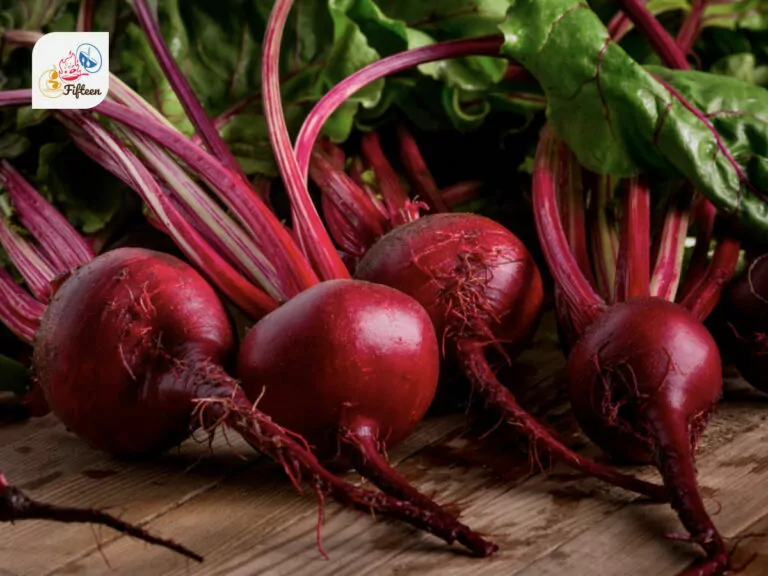
Beetroot
A root vegetable is known for its deep red color and sweet taste, often used in salads, soups, and as a cooked side dish.
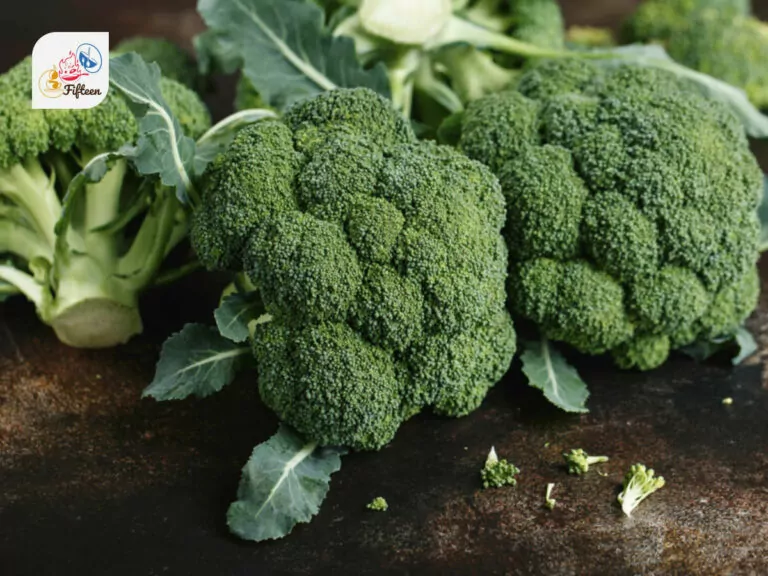
Broccoli
A green vegetable has a large flowering head, rich in vitamins C and K, commonly steamed, boiled, or eaten raw.
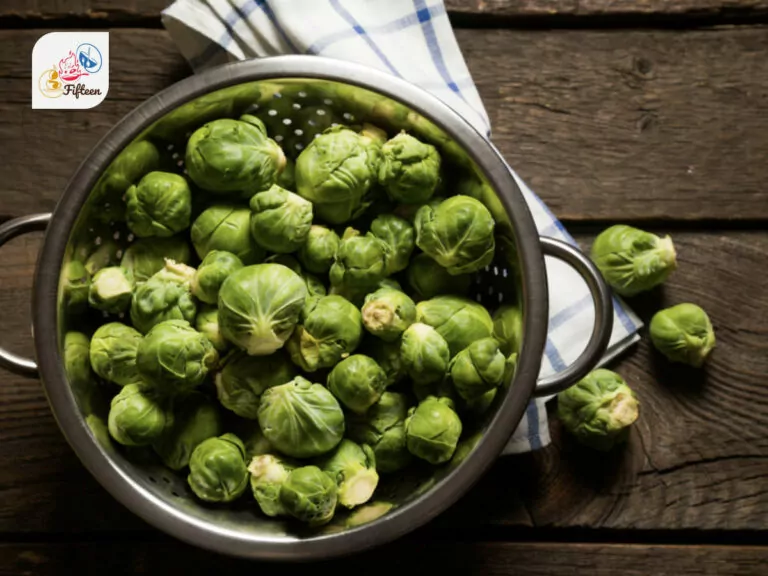
Brussels Sprouts
These are small, green vegetables resembling miniature cabbages, often roasted or boiled, and noted for their slightly bitter taste.
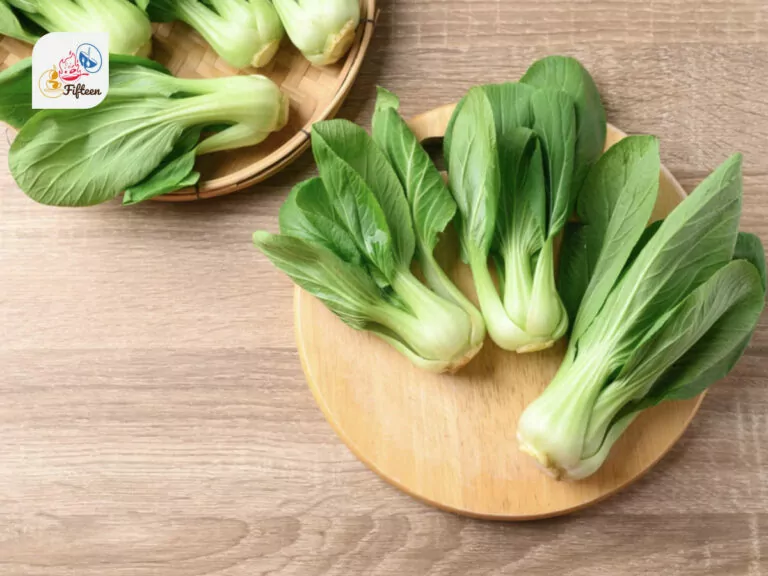
Bok Choy
It’s a type of Chinese cabbage with white stalks and dark green leaves, commonly used in Asian cuisine, especially stir-fries.
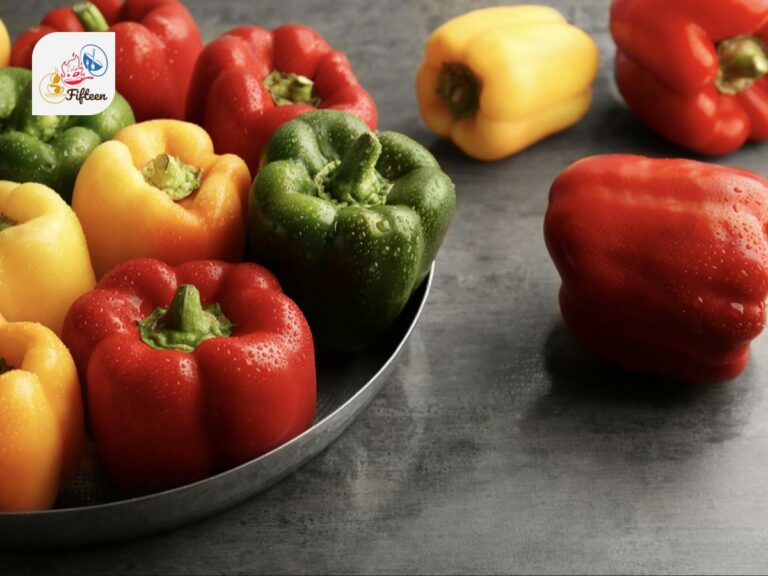
Bell Pepper
Also known simply as peppers, they are available in various colors (green, red, yellow, orange), and used in a wide array of dishes for their sweet flavor.
Of course, the list of B-starting vegetables is longer than that, which you can check out here.
Finally, did you find this guide helpful? Do you have a favorite B-fruit to share? I’d love to hear from you! Please leave a comment, like, or share this article with others who might find it useful. Let’s spread the word about the fantastic world of these natural foods.
Afterward, you should not miss out other fruit options with their initials ranging from A to Z.

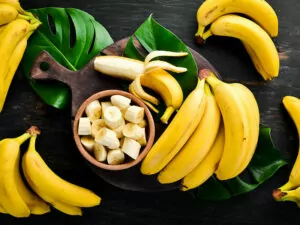
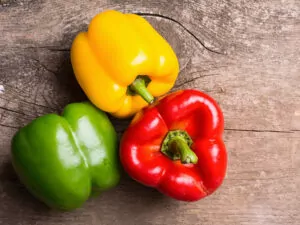
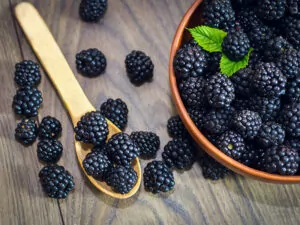
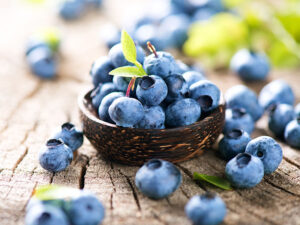
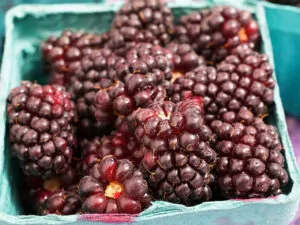
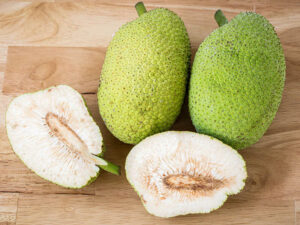
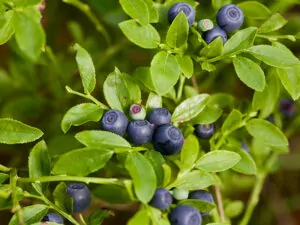
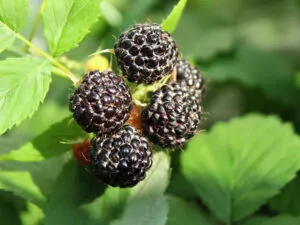

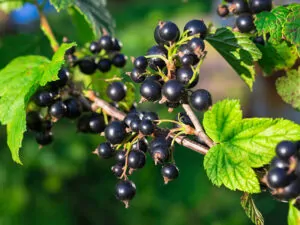
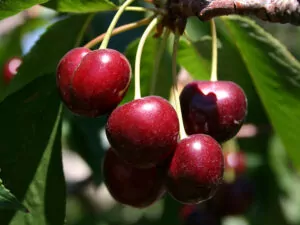
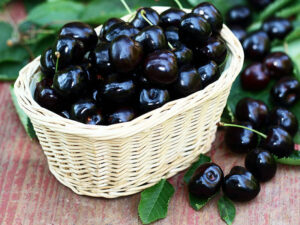
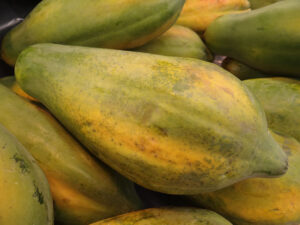
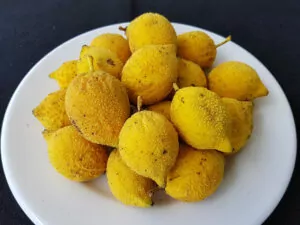
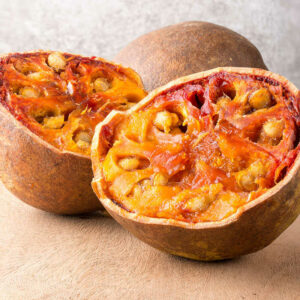
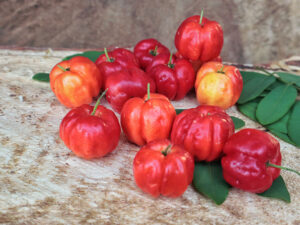
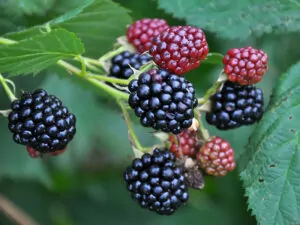
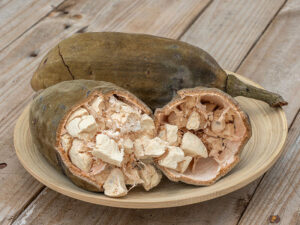
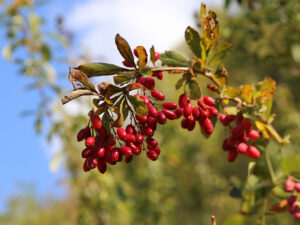
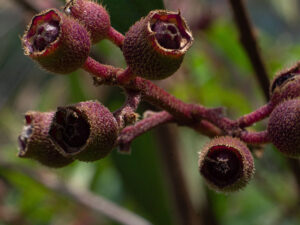
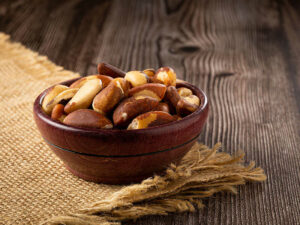
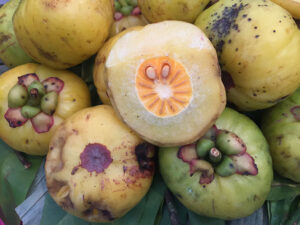
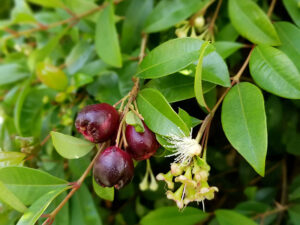
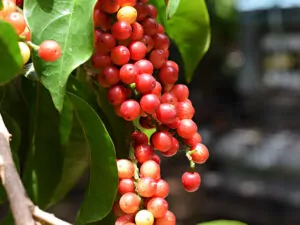
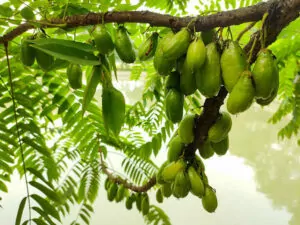
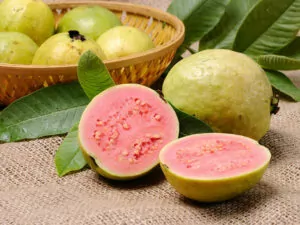
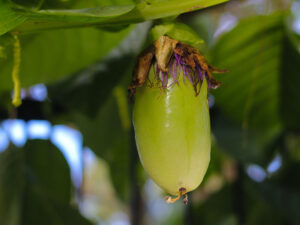
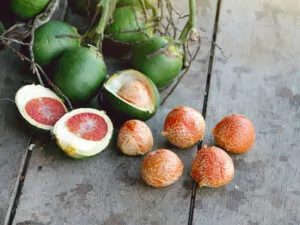
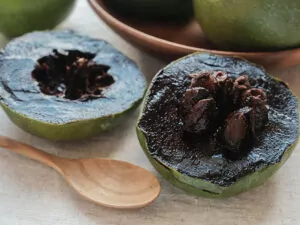
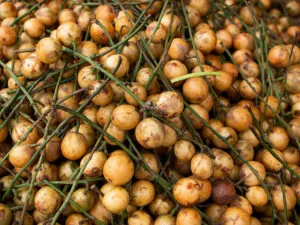
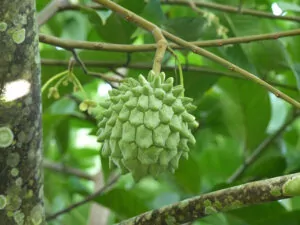
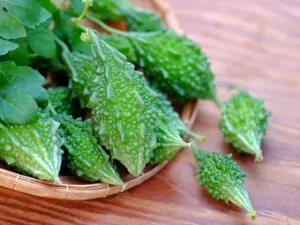
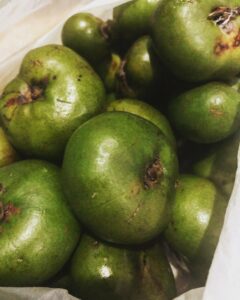
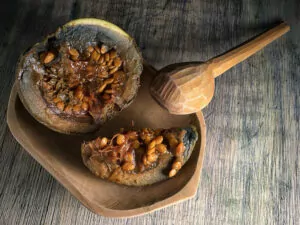
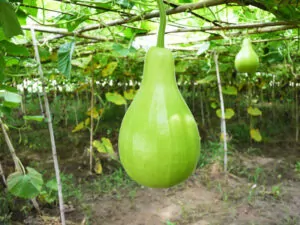
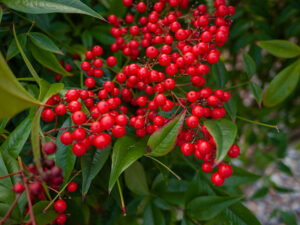
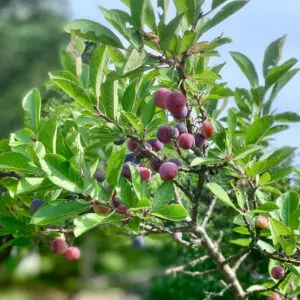
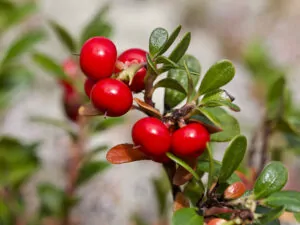
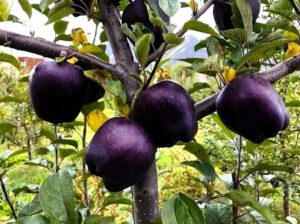
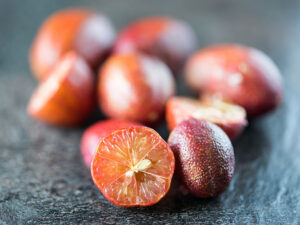
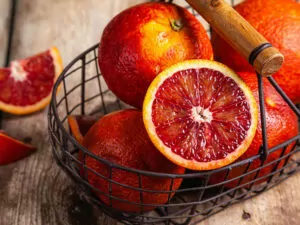
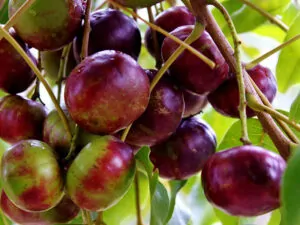
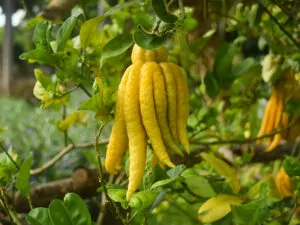
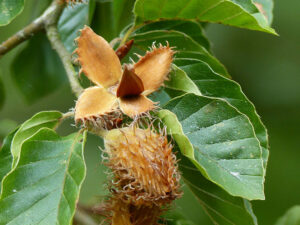
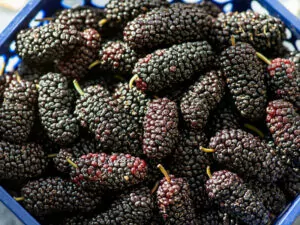
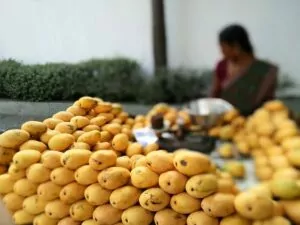
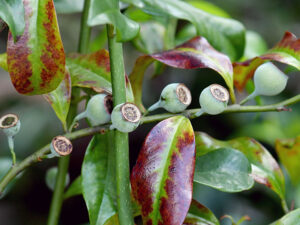
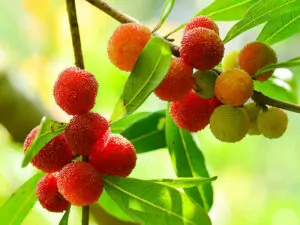
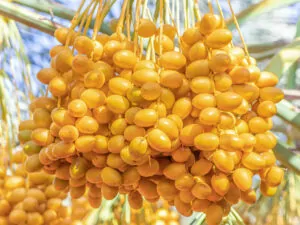
Jamie Scott
Editor in Chief, Senior Content Writer
Expertise
Home Cooking, Meal Planning, Recipe Development, Baking and Pastry, Food Editor, Cooking-video Maker, Western Food Evaluation Expert
Education
Le Cordon Bleu College of Culinary Arts
Local Community College, New York, NY
Jamie Scott is a skilled culinary expert and content creator specializing in Western cuisine. With over 15 years in the culinary field and formal training from Le Cordon Bleu, Paris, Jamie deeply understands how to blend nutrition with delicious flavors. His passion for cooking matches his commitment to making healthy eating accessible and enjoyable.
On Fifteen.net, Jamie brings a fresh perspective to classic dishes and beverages, offering readers insightful recipes, cooking tips, and a fresh view on meal planning that emphasizes taste, health, and simplicity.